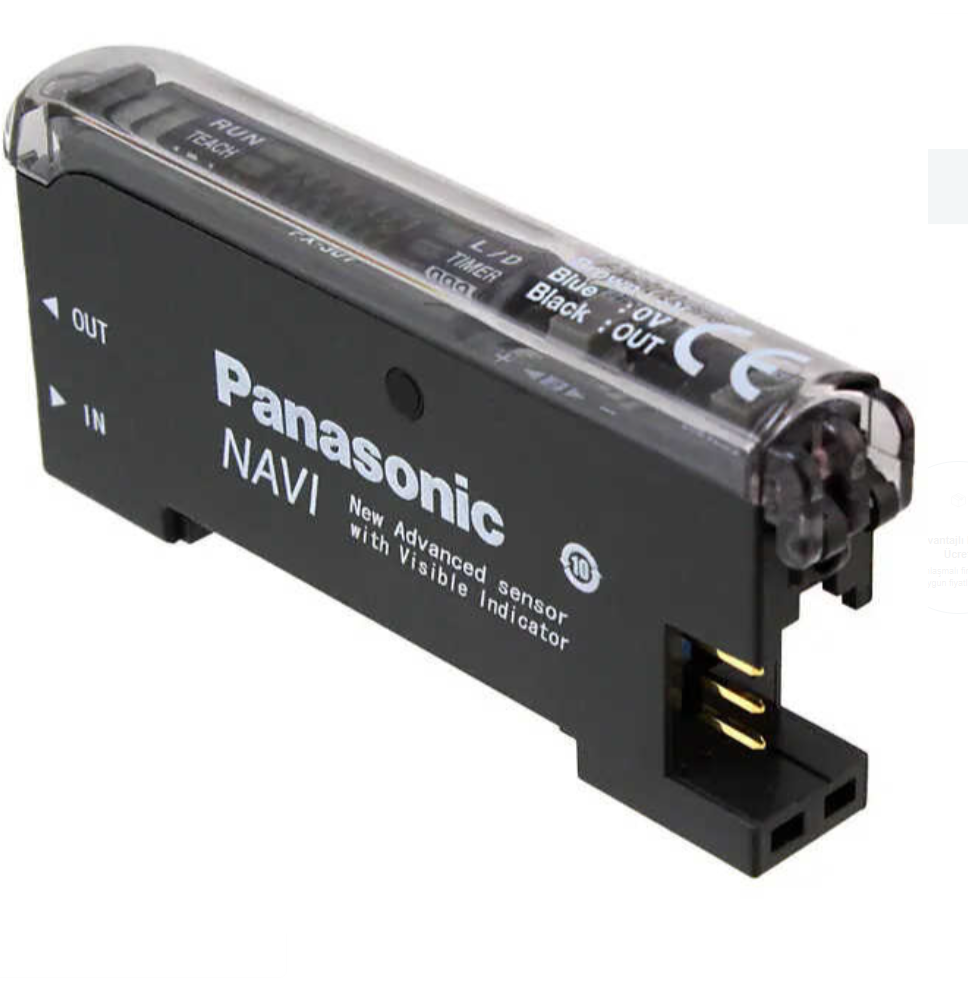Panasonic FX-301B Digital Fiber Sensor: Advanced Solution for Industrial Automation
The Panasonic FX-301B digital fiber sensor delivers exceptional performance in industrial automation sensor applications, featuring a blue LED fiber sensor for high-precision fiber optic detection. Equipped with an NPN output sensor and optical communication sensor capabilities, this compact fiber amplifier is ideal for FX-301B semiconductor manufacturing and precision assembly sensor tasks. As a RoHS-compliant sensor with IP67 fiber sensor protection, it ensures reliable operation in demanding environments. The fast response fiber sensor and timer function sensor enhance FX-301B quality control, making it a top choice for indoor fiber optic sensor setups with 16-unit sensor adjustment.
Technical Specifications of Panasonic FX-301B Digital Fiber Sensor
Designed for high-precision automation, the FX-301B offers robust specifications. The table below outlines its key features:
| Parameter | Specification |
|---|---|
| Sensor Type | Digital fiber optic, blue LED |
| Output | NPN open-collector transistor |
| Response Time | 50ms (FAST/STD/LONG modes) |
| Protection Rating | IP67 |
| Communication | Optical, up to 16 units |
| Power Supply | 12–24 VDC |
| Compliance Standards | RoHS (2011/65/EU, 2015/863/EU) |
Key Features and Industrial Applications
High-Precision Detection with Blue LED
The Panasonic FX-301B digital fiber sensor provides high-precision fiber optic detection, making it ideal for FX-301B semiconductor manufacturing tasks such as wafer alignment or component inspection. Its stable sensing sensor performance supports FX-301B quality control in precision assembly sensor applications, ensuring accurate detection in high-tech production environments.
Compact Design with Seamless Connectivity
The compact fiber amplifier design of the FX-301B, combined with optical communication sensor capabilities, enables synchronized adjustment of up to 16 units, reducing interference in multi-sensor setups. The IP67 fiber sensor rating ensures durability in indoor fiber optic sensor environments. The fast response fiber sensor enhances efficiency in dynamic automation tasks.
Flexible Control with Timer Functions
The FX-301B’s timer function sensor, including OFF-delay, ON-delay, and ONE SHOT modes, offers versatile control for FX-301B semiconductor manufacturing and precision assembly sensor applications. The FX-301B datasheet and FX-301B setup guide, provided by Panasonic, offer detailed instructions for optimizing performance in industrial automation sensor systems.
Installation and Maintenance
The compact fiber amplifier and NPN output sensor design simplify the FX-301B’s installation, with secure connections for reliable operation. The optical communication sensor feature streamlines multi-unit configurations. Regular cleaning of the fiber head maintains high-precision fiber optic performance, while the IP67 fiber sensor construction minimizes maintenance needs, ensuring long-term reliability in FX-301B quality control tasks.
Safety and Compliance
As a RoHS-compliant sensor, the FX-301B adheres to environmental standards (2011/65/EU, 2015/863/EU), reflecting Panasonic’s commitment to sustainability. The IP67 fiber sensor rating provides protection against dust and water, supporting safe operation in indoor fiber optic sensor environments. The 16-unit sensor adjustment feature enhances efficiency in complex automation setups.
Why Choose the Panasonic FX-301B Digital Fiber Sensor?
The Panasonic FX-301B digital fiber sensor stands out as a premier digital fiber sensor for industrial automation. Its blue LED fiber sensor, NPN output sensor, and optical communication sensor capabilities make it ideal for FX-301B semiconductor manufacturing and precision assembly sensor applications. The compact fiber amplifier, high-precision fiber optic performance, and timer function sensor ensure superior results in FX-301B quality control. Consult the FX-301B datasheet for detailed specifications and elevate your automation processes with this reliable, high-performance sensor.
Visit our blog about The Importance of Sensors in Industry 4.0.
Energy Efficiency and Next-Generation Precision
The Panasonic FX-301B Digital Fiber Sensor combines superior sensing precision with optimized energy efficiency for next-generation automation. Using a blue LED light source FX-301B, it achieves high contrast detection even on transparent or reflective materials. The short-wavelength LED FX-301B improves stability by minimizing ambient light interference, ensuring consistent accuracy in high-tech environments such as semiconductor production and micro-assembly systems. Its low power consumption FX-301B circuit design contributes to reduced energy costs and sustainable operation in 24/7 manufacturing lines.
With its IP67-rated FX-301B housing, the sensor resists dust, oil, and humidity—making it ideal for cleanroom and precision automation setups. The fast response FX-301B capability, combined with advanced optical communication FX-301B, enables stable data exchange between multiple sensors without delay. This allows operators to configure up to 16 units simultaneously, improving synchronization and efficiency across production lines.
Smart Automation and Industry 4.0 Integration
Fully compatible with modern Industry 4.0 FX-301B standards, this sensor supports intelligent data communication and process optimization. The timer function FX-301B enables customizable response timing—ideal for robotic systems and precision alignment tasks requiring dynamic control. Its compact amplifier FX-301B design saves installation space while maintaining powerful output and reliability.
The Panasonic FX-301B Digital Fiber Sensor represents a new era of precision automation—combining blue LED accuracy, energy efficiency, and multi-sensor intelligence to deliver unmatched performance in semiconductor and micro-manufacturing applications. Whether optimizing yield, reducing maintenance, or enhancing stability, it’s the perfect solution for smart and sustainable automation environments.

